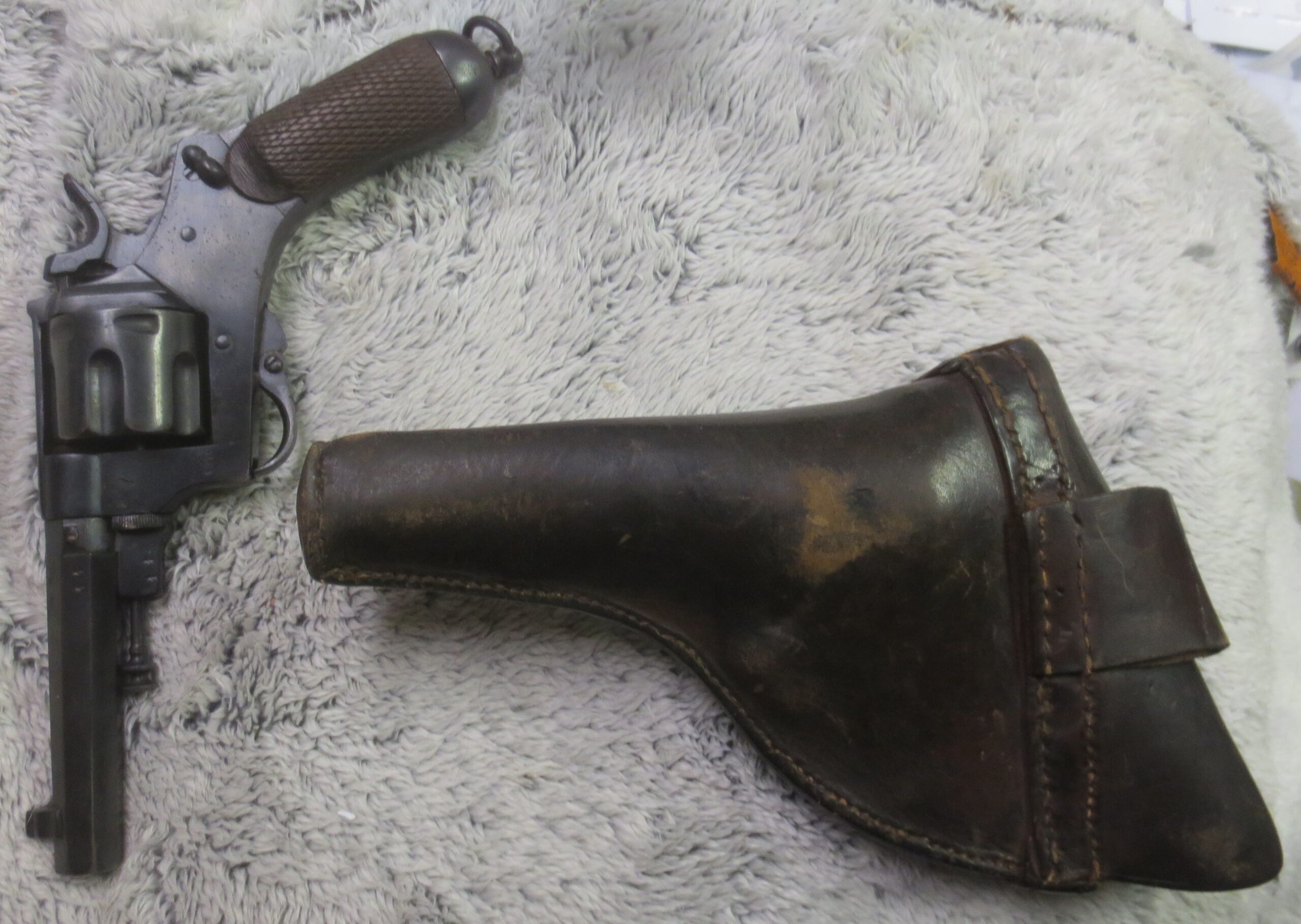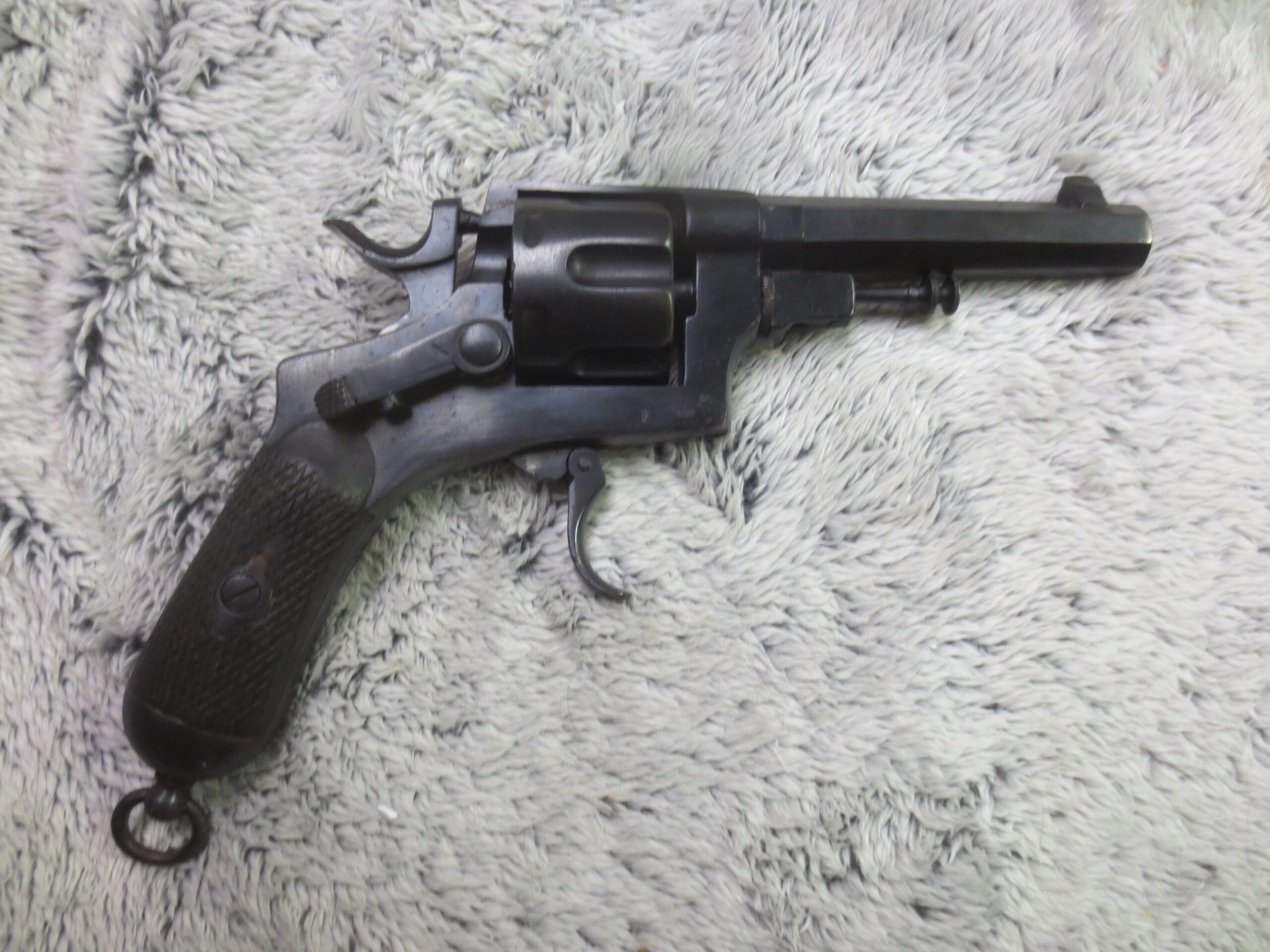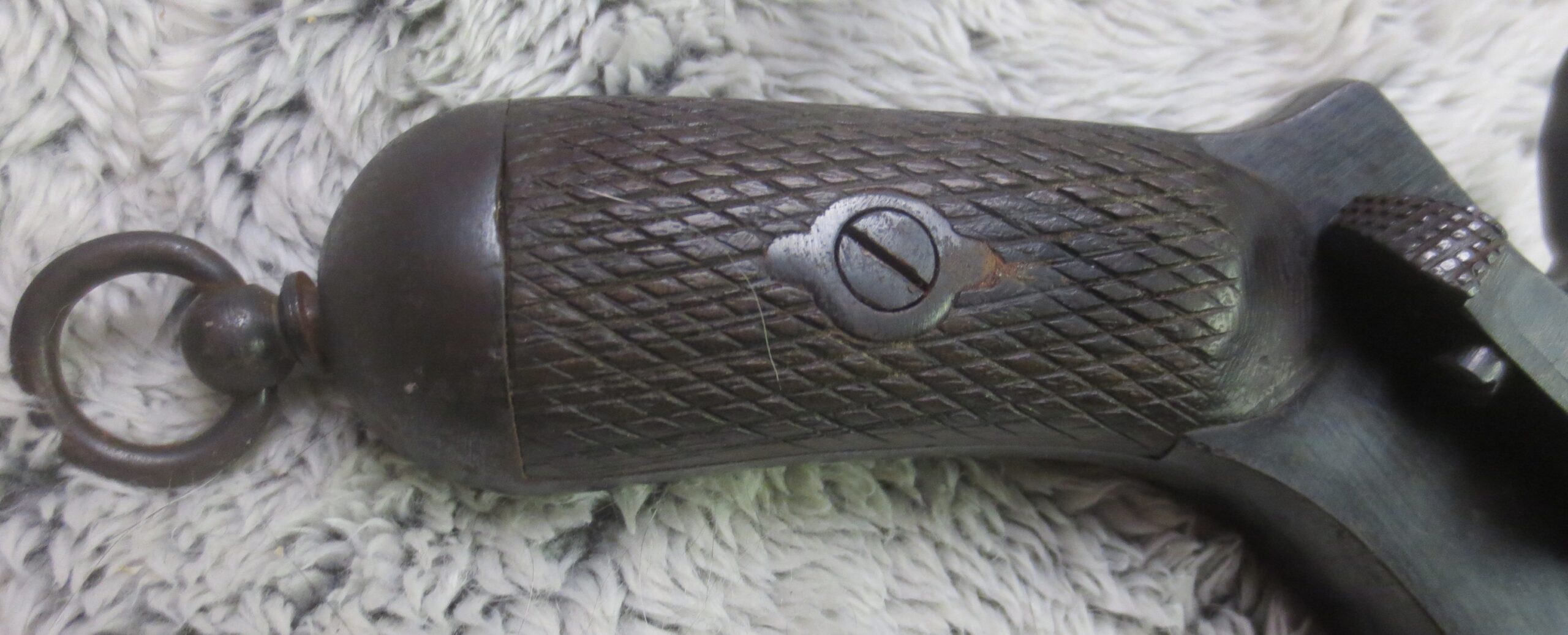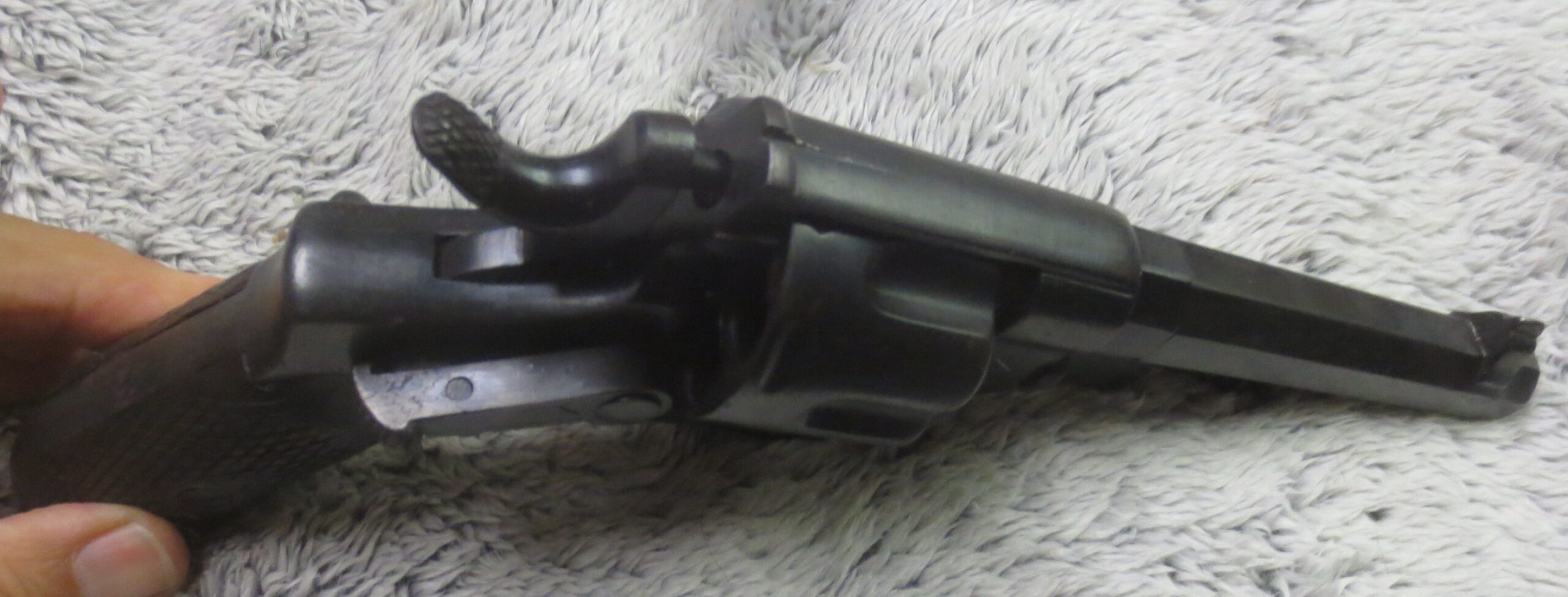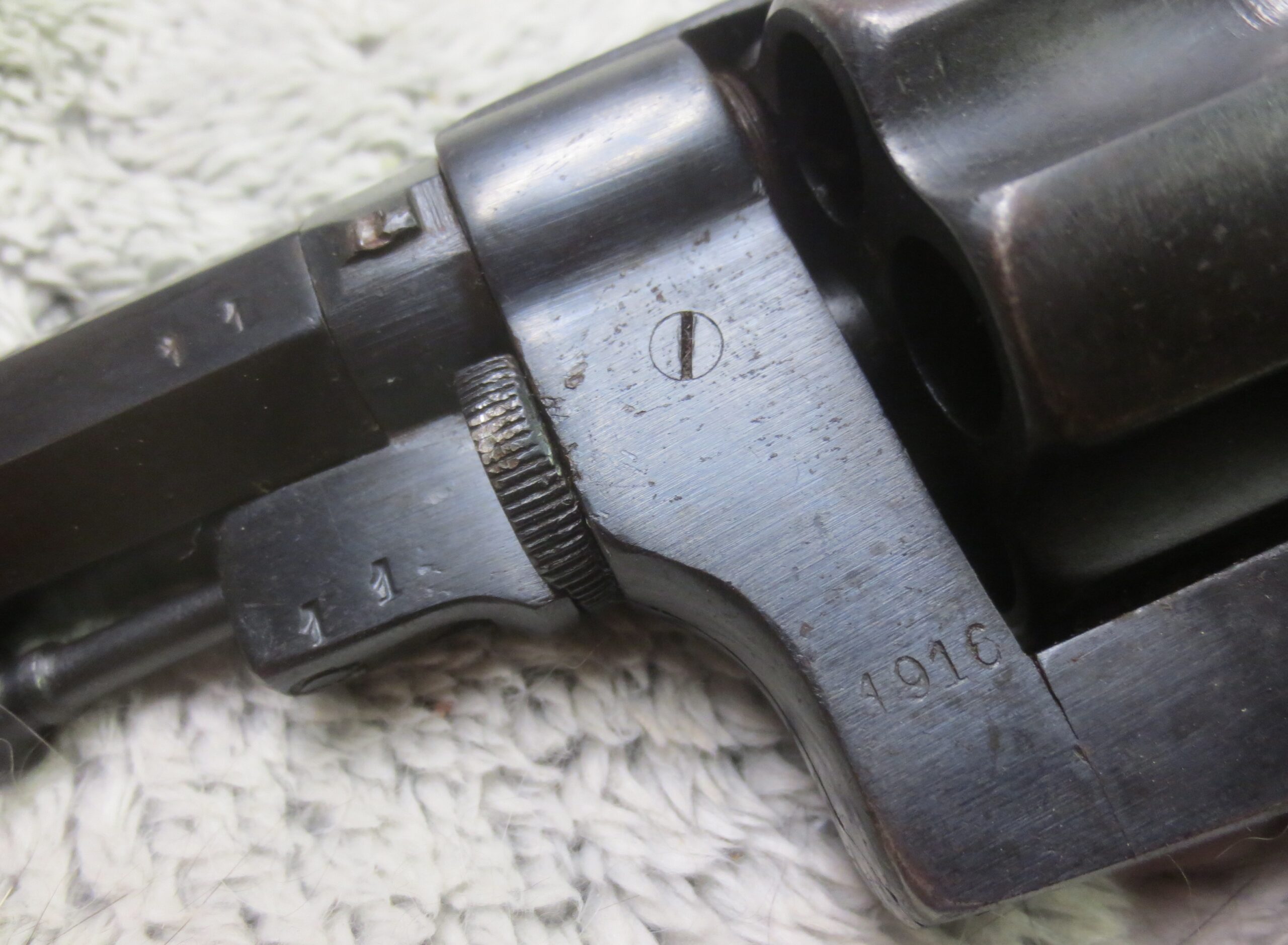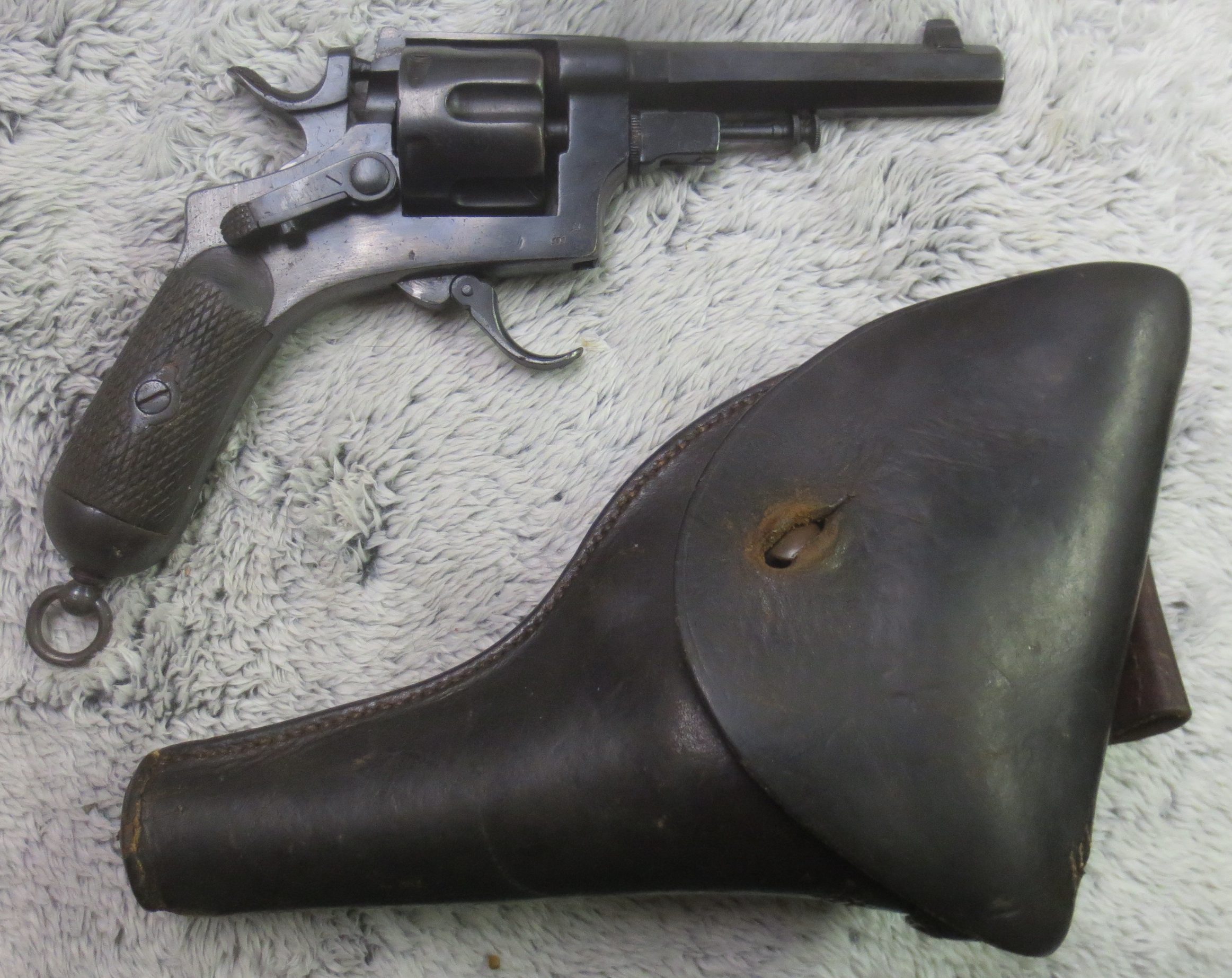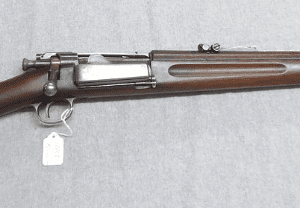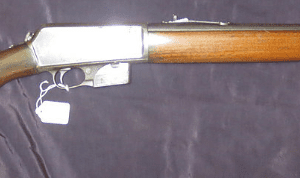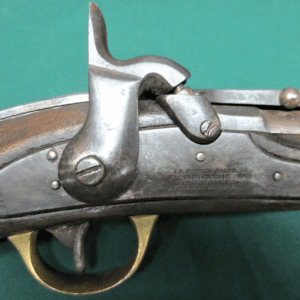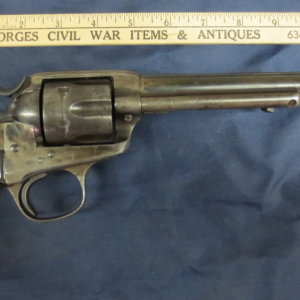Description
This is as fine grade of military revolver, complete with the VERY RARE original flap holster, just as brought home by an American soldier from Italy in 1945. It is in near MINT condition overall and the action and bore are flawless. Only a few scattered freckles of oxidation are visible and the checkered grips are also in fine condition, showing very little wear. It is a super low serial number (11) and is crisply stamped with the year of production, 1916. The fine leather holster is likewise near perfect for an item at least a full century old. 99% +/- original blued finish remains. This is a standard Type A model, meaning it was intended to be issued to enlisted troops. The holster is stamped inside as shown.
The Bodeo Model 1889 (Italian: Pistola a Rotazione, Sistema Bodeo, Modello 1889) was an Italian revolver named after the head of the Italian firearm commission, Carlo Bodeo. It was produced by a wide variety of manufacturers between 1889 and 1931 in both Spain and Italy. The Bodeo was employed by the Royal Italian Army in World War I, the Interwar Italian colonial wars and World War II. The Bodeo comes in two distinct varieties with only superficial weapons differences. It is chambered for the 10.35mm Ordinanza Italiana metallic cartridge, roughly a .44 caliber.
Made by a large variety of Italian gun-makers, the Bodeo became the service revolver of the Italian Army in 1891. It remained the principle handgun of the Italian Army until it was increasingly supplanted by the Glisenti Model 1910. The revolver was never declared obsolete and remained as a reserve weapon until the end of World War II. The Italian manufacturers identified with the production of the Bodeo include: Societa Siderurgica Glisenti, Castelli of Brescia, Metallurgica Bresciana, and Vincenzo Bernardelli of Gardone Val Trompia. During World War I, Spanish manufacturers Errasti and Arrostegui of Eibar produced the Bodeo for the Italian government. The Italians nicknamed this revolver coscia d’agnello (“leg of lamb”). During World War II, the Wehrmacht designated the Bodeo as Revolver 680 when utilized as an alternative firearm.
The Bodeo Model 1889 is a solid-framed, six-shot revolver. The barrel, the cylinder, the trigger components, the loading door, the ejection rod, the springs and the screws were made in steel while the frame, the backplate, and the ejection rod collar were made of iron. An external hammer block drop safety was designed and retrofitted to many revolvers in 1894, though this external hammer block safety was replaced with an internal safety during an arsenal refinishing program in 1915.
Prior to the First World War, the infantry version of the Bodeo was originally produced “in the white”. The Italians underwent a program to arsenal refinish many revolvers in 1915, with changes including bluing the revolvers and installation of an internal hammer block drop safety. Later models of the Bodeo were blued from the factory.
The revolver was designed in two distinct versions: The Type A Enlisted model, with an octagonal-barreled version with a folding trigger; and a Type B officer’s model, with round-barreled version designed with a trigger guard, The octagonal-barreled version was produced for rank and file Italian soldiers, while the round-barreled version was produced for non-commissioned officers and field officers. The folding trigger version was produced in greater numbers.
During The First World War, licensed copies were made by several Spanish firms from the Eibar region. Production of these Spanish copies occurred between 1916-1917.
The Bodeo was considered simple and robust. Due to the revolver being produced by a multitude of manufacturers, the quality of the weapon varied greatly. Frames were made from a wide variety of materials ranging from brass to brazed copper plates. The gate was connected to the hammer with the barrel screwed into the frame. Ejection was achieved by the rod normally housed in the hollow axis pin. The hammer block was designed to prevent firing unless the trigger was fully cocked.
These revolvers were used by Royal Italian Army in World War I, the Second Italo-Abyssinian War, the Spanish Civil War and in World War II.
FFL or C&R required for transfer…NO EXCEPTIONS

